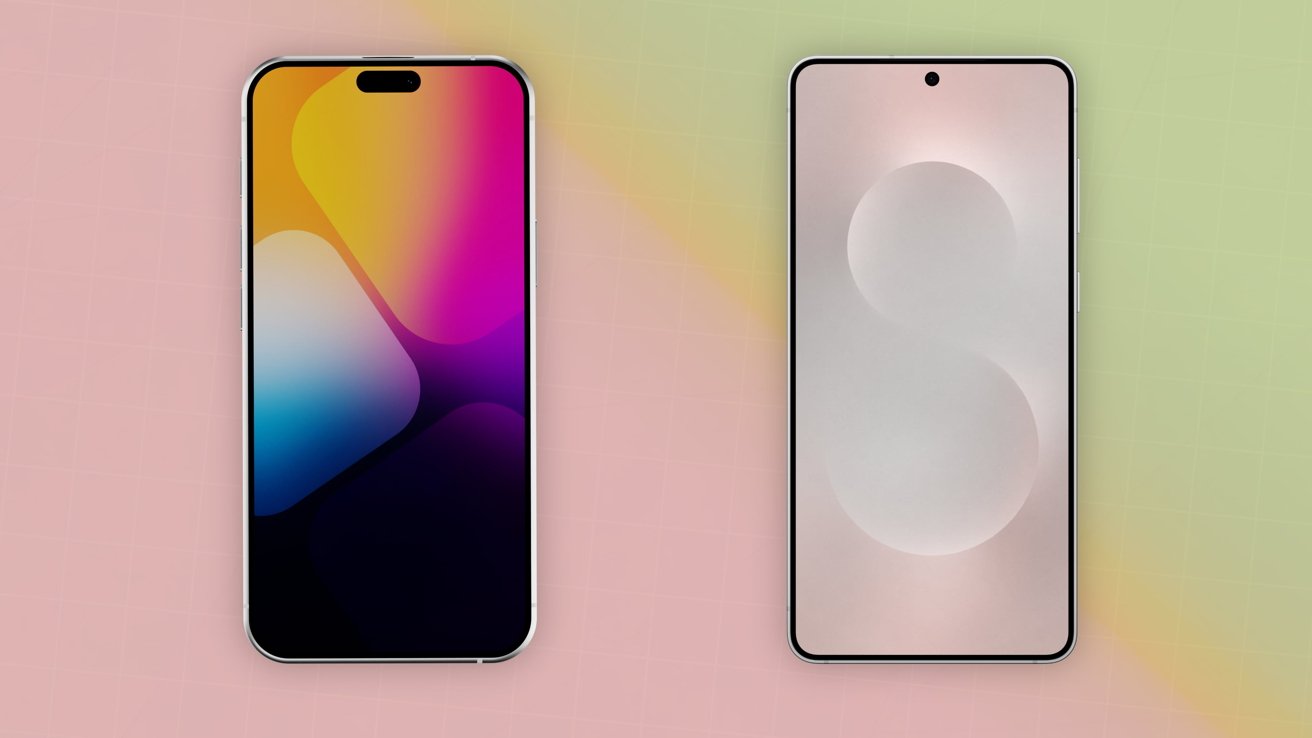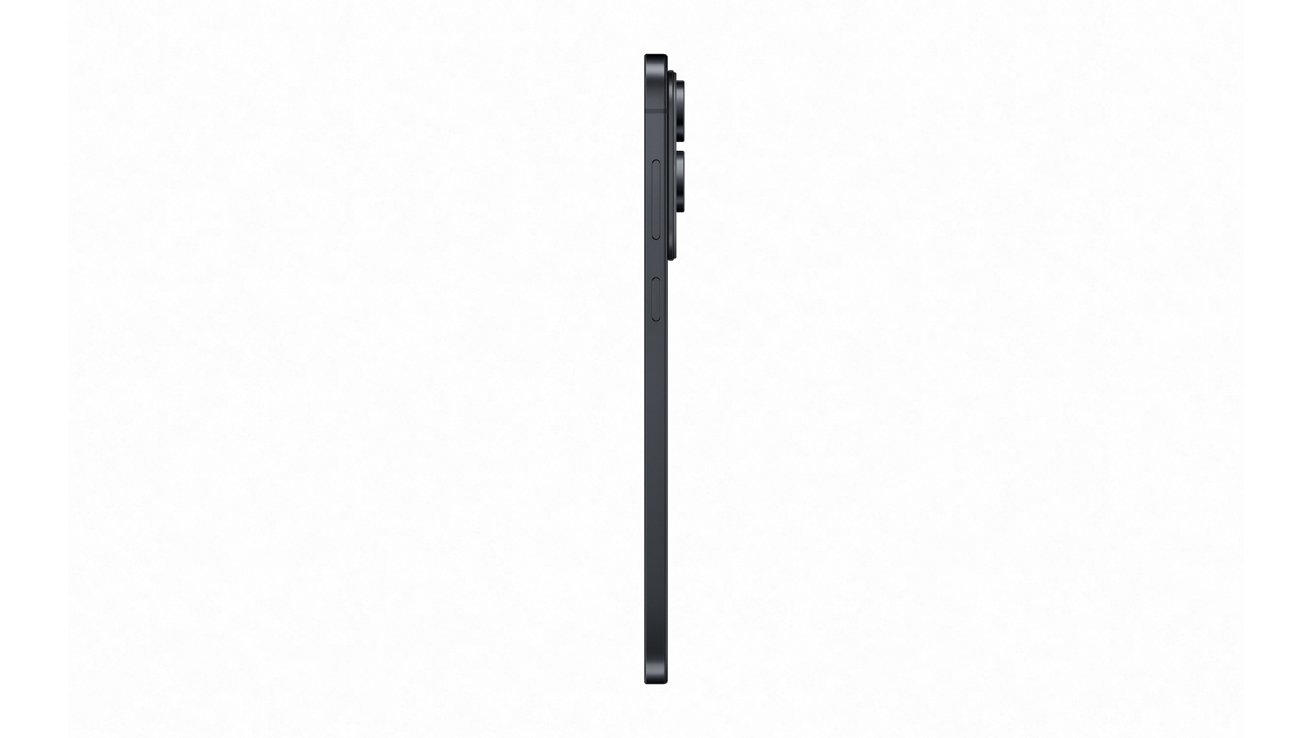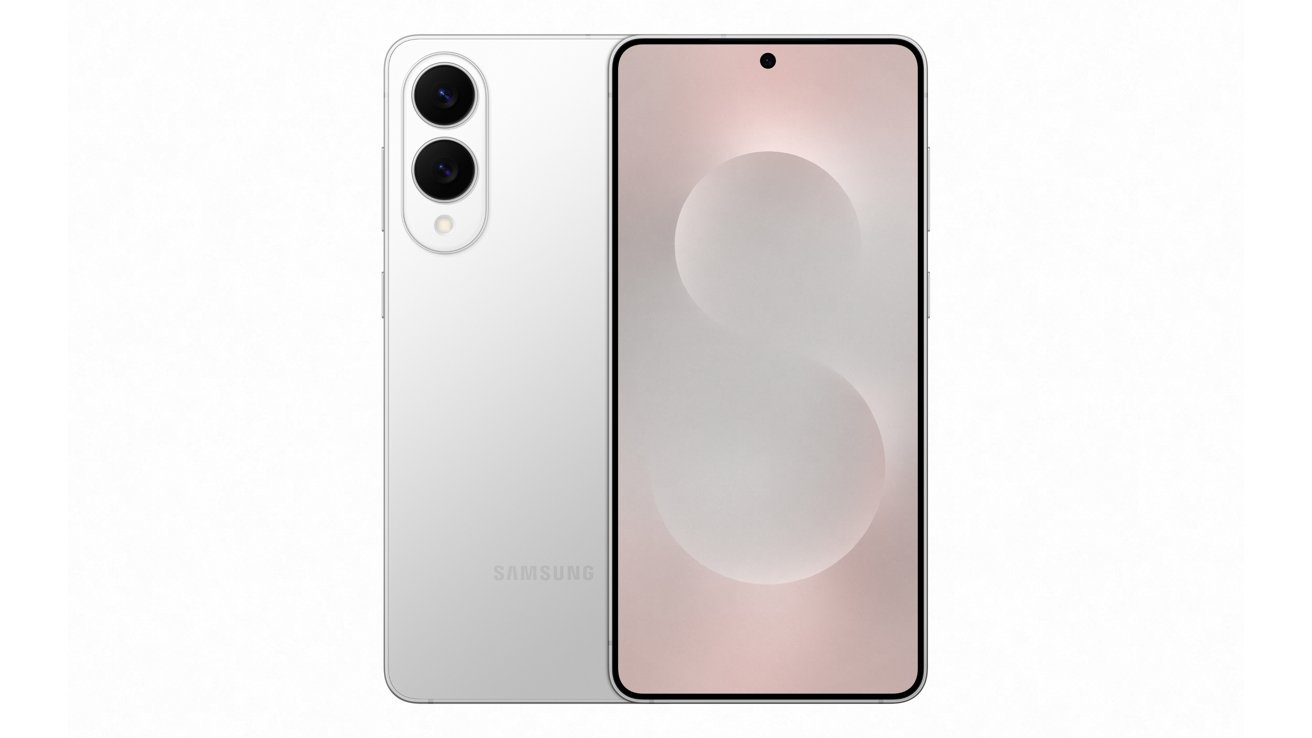iPhone 17 Air vs Samsung Galaxy S25 Edge: Apple's thin iPhone competition
The iPhone 17 Air is rumored to arrive in September and there are already a lot of expectations for it. Here's how it may fare against the just-launched Samsung Galaxy S25 Edge.

iPhone 17 Air render [left], Samsung Galaxy S25 Edge [right]
Apple has, for a long time, been obsessed with making thinner devices. This fall, it is rumored that it will offer something in that vein in its iPhone lineup, in the form of the iPhone 17 Air.
However, it's not the only smartphone producer on the market capable of creating a slimline device.
The May 12 launch of the Samsung Galaxy S25 Edge shows a rival device that offers many of the same core capabilities expected from Apple's slimmest model.
This gives consumers an opportunity to see the kind of device that Apple could be bringing out in a few short months time.
iPhone 17 Air vs Samsung Galaxy S25 Edge - Physical design
The Galaxy S25 Edge doesn't stray far from the typical design of a premium smartphone. It is, in essence, a device with an edge-to-edge display, with a thin metal strip around the edge.
The key to the design is its thickness, with Samsung managing to make it just 5.8mm thick. For comparison, the Galaxy S24+ is 7.7mm thick, while the iPhone 16 is 7.8mm.
At 6.7 inches, the screen diagonal gives it a fairly large footprint, which also helps accentuate the thin aesthetic for the hardware.

Unsurprisingly, the Samsung Galaxy S25 Edge is very thin.
While we have actual facts and figures for the Galaxy S25 Edge, we do have to rely on rumors and educated guesses for the iPhone 17 Air.
So far, rumors for the model point to it being 5.5 or 5.6mm thick, which is marginally smaller than what Samsung managed with its design.
To go with the thin body, the iPhone 17 Air will also have a large edge-to-edge display. At 6.6 inches, the Air will be in pretty much the same ballpark as the Edge, and have the same thinness-accentuating effect.
That thinness brings with it the perception of fragility and pliability. The poorly-named "Bendgate" is still something people remember.
To ensure strength, Samsung uses a titanium frame in the Edge, supported by Corning Gorilla Glass Ceramic 2 on the front and Victus 2 on the back. Rumors point to Apple doing something similar for the Air, with a titanium alloy frame.
While both smartphones will be marketed on being as thin as possible, they won't be able to escape having a camera bump sticking out of the back. That's something that will remain a problem, simply because of the difficulty of squeezing components into an extremely enclosed space.
iPhone 17 Air vs Samsung Galaxy S25 Edge - Screens
The displays of the smartphones will dictate their overall size, and as discussed, they will be quite similar. At 6.7 inches diagonally for the Edge and 6.6 inches believed for the Air, it will be very close when both models are out.
The screens themselves should also be similar in terms of technology and capability, thanks to Samsung Display being a supplier of iPhone displays.

The Samsung Galaxy S25 Edge display is edge-to-edge as usual, and has ProMotion-like qualities.
Samsung uses an AMOLED 2X display, which is listed as having a QHD+ resolution, as well as a variable 1-120Hz refresh rate. This is a premium display for a flagship device, and is to be expected from Samsung.
On Apple's side, the iPhone 17 Air is anticipated to use Samsung's M14 OLED panels, which offer a 30% boost in brightness and a better lifespan over the preceding M13 panels.
Resolution-wise, the Air should be at about 2,740 by 1,260, according to analyst Ming-Chi Kuo. This would be pretty close to the 2,796 by 1,290 resolution of the iPhone 16 Plus.
The rumor mill is also in the belief that Apple will incorporate ProMotion into the display. ProMotion is typically a Pro-grade iPhone feature, but the special nature of the Air may warrant its inclusion here.
iPhone 17 Air vs Samsung Galaxy S25 Edge - Cameras
A big change expected for the iPhone 17 Air is the camera, in part prompted by the limited internal capacity of the iPhone 17 Air's enclosure. With the display, circuitry, and other components fighting for limited space, it makes sense for the bump to play a part here.
For the Air, the rumors are that Apple is switching to a camera "bar," namely a bump that spans the entire width of the iPhone.
Despite having the extra space of the bar, Apple may not necessarily include many cameras in it. Rumors point to it having a single rear 48MP camera, which could potentially provide a 12MP "optical zoom" with a virtual second camera, thanks to cropping.
Samsung's Edge, meanwhile, will be using a dual camera layout similar to the iPhone 16, with it confined to a compact corner bump.

The Samsung Galaxy S25 Edge dual camera bump isn't a "bar"
The two cameras consist of a 200MP wide-angle sensor, which is also capable of a 2x "optical quality zoom," as well as a separate 12MP ultra-wide autofocus version.
Around the front, Apple is suspected to include a 24MP sensor, presumably with a hole-punch design hidden by the Dynamic Island UI. Samsung's front hole-punch camera has a 12MP sensor.
iPhone 17 Air vs Samsung Galaxy S25 Edge - Other specifications
When it comes to comparing other specifications, it becomes hard to propose what the iPhone 17 Air will have, but it will probably be similar in performance to the iPhone 17 Air.
It's probable that Apple will include the A19 chip using a 2-nanometer process from TSMC. It should be more powerful performance-wise than the iPhone 16 range, but the thermal challenges accompanying a thin smartphone design could temper the improvements.
We know the Galaxy S25 Edge uses the Snapdragon 8 Elite Mobile Platform for Galaxy, the same as used in the other Galaxy S25 models. We also know it uses a vapor chamber cooling system, but we don't know if Apple will do the same.
Onboard AI processing is also offered by the Edge, and will naturally arrive in the iPhone 17 Air too.
On the Edge, there's tools such as Drawing Assist, Audio Eraser, image scaling with ProScaler, and Auto Trim video highlight reels. There's also Google Gemini support as well.
You could say this is somewhat comparable to Apple Intelligence, including its Clean Up function for Photos feature and ChatGPT integration. That's before taking into account whatever features Apple announces for iOS 19 at WWDC this June.
Battery life on the Edge will be lengthy, thanks to the inclusion of a 3,900mAh battery. While we don't know what Apple's battery will hold, there are rumors of a revival of a battery case accessory on the horizon.
iPhone 17 Air vs Samsung Galaxy S25 Edge - A hint at the future
It's impossible to directly compare a product that exists against one that has been heavily rumored, albeit months away from release. But even so, you can still see a lot of similarities between the two products, both physical and conceptual.
Indeed, you could probably consider the Edge as the Samsung equivalent of what Apple could be bringing out in September. It's a thin smartphone with a very similar footprint, so it should give you an idea of what to expect.
More of a comparison between the Edge and Air will certainly be made when we have hard data on Apple's slim smartphone's capabilities. But for now, Samsung has offered an analog that Apple could equally achieve.
iPhone 17 Air vs Samsung Galaxy S25 Edge - Where to buy
The Samsung Galaxy S25 Edge is available from Samsung for preorder, priced from $1,099.99.
Read on AppleInsider

Comments
For me, thicker with a better camera would be more desirable.
However not everyone shares your exact usage case.
Is there a large enough segment of the market that will sustain thin smartphones? Only time will tell however we do know that the small and vocal group of small phone enthusiasts weren't enough to keep the iPhone mini alive. And no other major smartphone manufacturer has made iPhone mini-sized handsets for years either.
I think smartphones are already thick enough I really don't want to carry anything larger or heavier. Better battery technology and power management would be a boon for everyone on all iPhone models. Improvements in camera technology are always welcome too, we have enjoyed so many performance improvements over the years especially in low light photography/videography which was abysmal on early iPhone/iPod touch/iPad generations.
My gut feeling is that the purported thin "iPhone Air" will have an initial pop of interest and then wane over time. It may end up meeting the same demise as the iPhone mini and be discontinued after two generations.
I own an iPod touch 6th generation so I know what a very thin handheld device is like. But the iPod touch 6th generation also has abysmal battery performance, despite the CPU being underclocked to save power. Naturally today's silicon is more energy efficient and today's battery technology has improved but it's still a compromise. More performance = faster battery drain.
For the iPhone Air to work Apple will need to make significant compromises to maintain decent battery performance. These compromises might be acceptable for typical everyday usage but might be a severe detriment in more demanding situations, like going on vacation and using your phone heavily (photos, videos, mapping, web surfing, research) while you're out of the hotel room for 16-18 hours straight.
Apple doesn't like to be in the market of niche iPhones and the iPhone Air smacks of being niche.
If Apple does release an iPhone Air I'm sure I'll drop by the local Apple Store and check it out though. But I'm not shelling out $1000 for a phone that gets poorer battery life than my trusty old iPhone 12 mini. Hell, I'd rather upgrade to the iPhone 16 or 16e instead of this purported Air. And I don't know if I can go back to a one-lens camera from a two-lens camera. The wide-angle lens is particularly useful to me, much more than telephoto. Even on my old film cameras I'd usually mount a wide-angle lens.
There is the possibility of one OEM selling more at the expense of a different OEM selling less, but there really isn't a killer feature to enable an OEM to do that anymore. What's left is probably mismanagement of an OEMs phone or product lineup, which hopefully won't happen to Apple.
In a mature market, Apple needs more products, not less imo, especially one the size of smartphones. They need to serve more of the niches. Not a lot more, maybe 2 or 3 more models. There are 8 macOS products, and there could be 2 more, let alone Apple eschewing the whole low end. So, like I've been saying, Apple should add more models to their smartphone lineup.
A 5.6" model with comparable battery life to the 6.1"/6.3" should be available. Something like 8.5 to 9.0 mm thick. The niche is there. A thin model like this iPhone 17 Air. The folding models rumored for 2027. Maybe a high aspect ratio model? Something like 2.5" x 6.5"?
For there to be any growth in their iPhone business, they need to focus on emerging markets not to chase the 1% of their mature markets that might want to upgrade to something flashier. In the end it's still just another phone. The iPhone Thin won't do anything better than the standard iPhone; the leakers and rumor mongers have only said it'll be thin, there are no other unique features that will set the handset apart.
I'm still baffled why they would want to market an iPhone Thin. Sure, the initial model will sell well but I don't see any other reason for its existence other than pure aesthetics. For sure it's not going to be the performance champion nor will it be priced as an entry level model. Yes, we'll see it all over Instagram and Tik Tok but that's not going to build the user base in Ivory Coast or Bangladesh.
They were putting contemporaneous chips in it, the same camera modules as the iPhone 12 and 13, and was trying to sell it $100 cheaper than the 6.1” module. The margin gains weren’t there and maybe inflation killed it for good.
Of course, I would say they should have defeatured the mini to 1 camera and a prior gen chip to get margins back. Make it little thicker for a bigger battery and easier to manufacture.
As for Edge vs Air: comparing actual photos of the Edge to an allegedly accurate non-working model of the Air, I'd say the Edge is clearly the better looking and more successful ultra thin design. While the Edge still retains a camera bump, it's very svelte and accentuates the thinness of the phone. The Air's camera bar is far larger and more pronounced, which is giving hunchback on such a thin phone.
BUT... if Samsung's first folding phone is any guide--you know, the one that randomly burst into flames and was prohibited on airline flights--I wouldn't be first in line to try its uber thin phone. That Samsung achieved such a slender profile while retaining two camera lenses, which Apple was unable to do, makes me wonder a lot about things like heat dissipation, battery life, etc. We shall see.
The tech is probably a gateway to iPhone Fold/Flip.